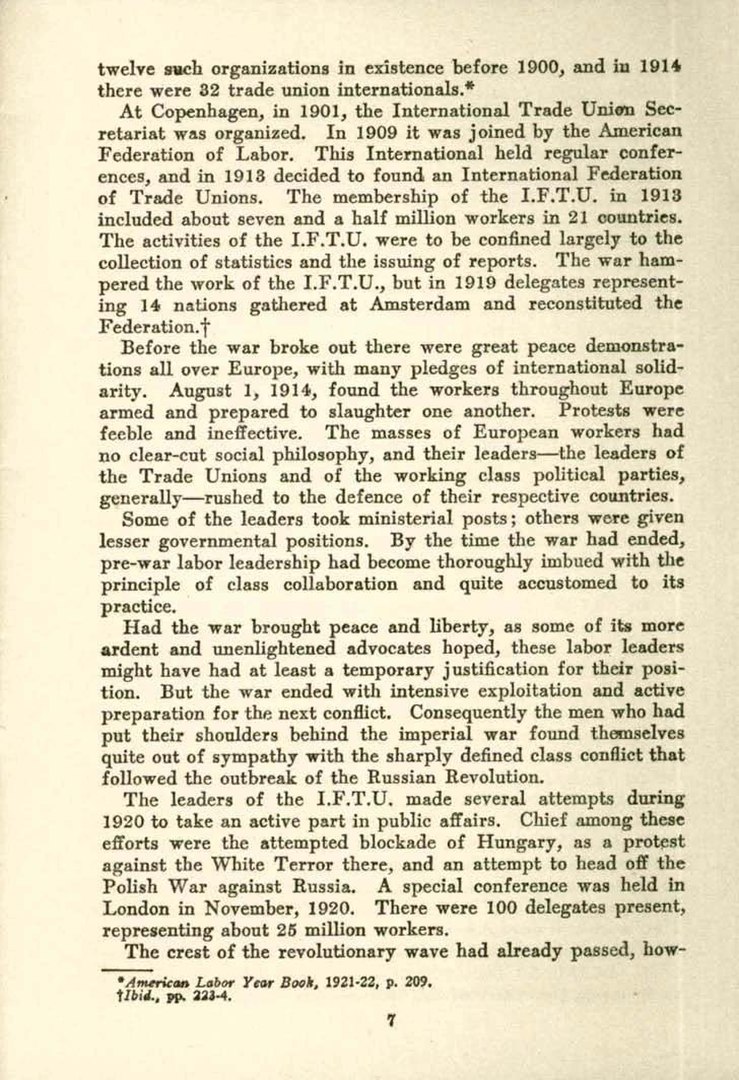twelve such organizations in existence before 1900, and in 1914 there were 32 trade union internationals.[1]
At Copenhagen, in 1901, the International Trade Union Secretariat was organized. In 1909 it was joined by the American Federation of Labor. This International held regular conferences, and in 1913 decided to found an International Federation of Trade Unions. The membership of the I.F.T.U. in 1913 included about seven and a half million workers in 21 countries. The activities of the I.F.T.U. were to be confined largely to the collection of statistics and the issuing of reports. The war hampered the work of the I.F.T.U., but in 1919 delegates representing 14 nations gathered at Amsterdam and reconstituted the Federation.[2]
Before the war broke out there were great peace demonstrations all over Europe, with many pledges of international solidarity. August 1, 1914, found the workers throughout Europe armed and prepared to slaughter one another. Protests were feeble and ineffective. The masses of European workers had no clear-cut social philosophy, and their leaders—the leaders of the Trade Unions and of the working class political parties, generally—rushed to the defence of their respective countries.
Some of the leaders took ministerial posts; others were given lesser governmental positions. By the time the war had ended, pre-war labor leadership had become thoroughly imbued with the principle of class collaboration and quite accustomed to its practice.
Had the war brought peace and liberty, as some of its more ardent and unenlightened advocates hoped, these labor leaders might have had at least a temporary justification for their position. But the war ended with intensive exploitation and active preparation for the next conflict. Consequently the men who had put their shoulders behind the imperial war found themselves quite out of sympathy with the sharply defined class conflict that followed the outbreak of the Russian Revolution.
The leaders of the I.F.T.U. made several attempts during 1920 to take an active part in public affairs. Chief among these efforts were the attempted blockade of Hungary, as a protest against the White Terror there, and an attempt to head off the Polish War against Russia. A special conference was held in London in November, 1920. There were 100 delegates present, representing about 25 million workers.
The crest of the revolutionary wave had already passed, how-
7
